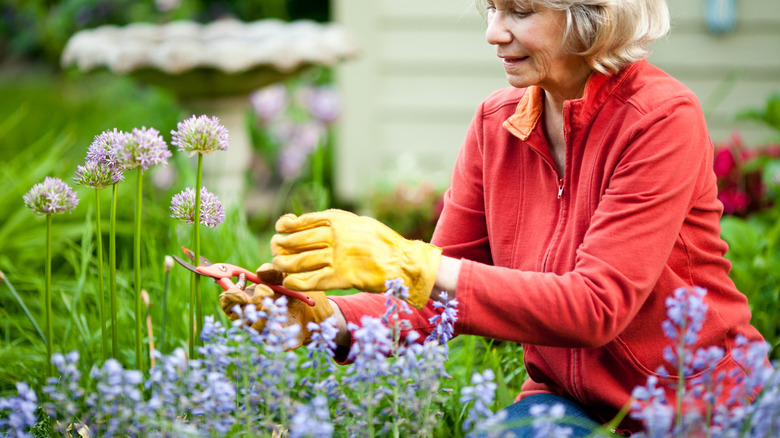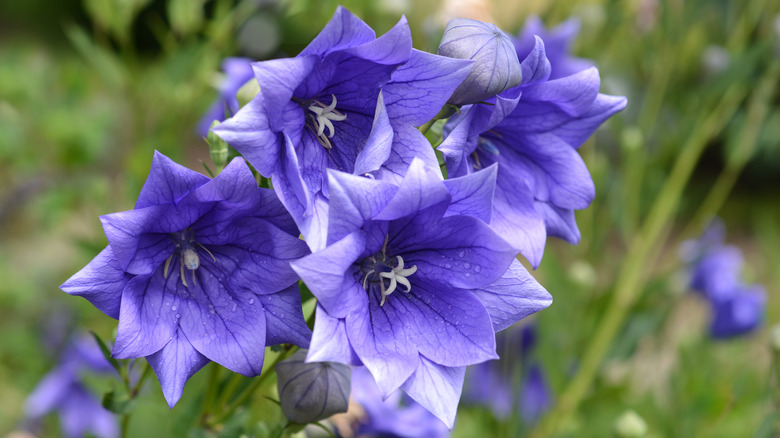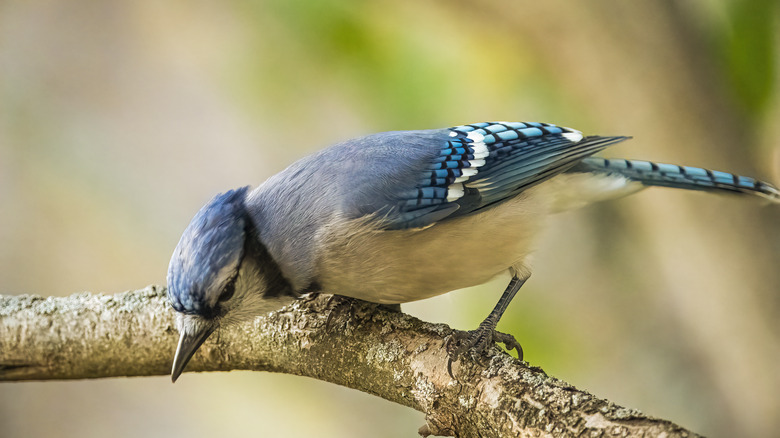The One Color That Will Attract More Blue Jays To Your Garden
Whether you're an avid bird watcher or just like to see colorful birds swoop into your backyard as you drink coffee in the morning, it's always a treat to see a blue jay in your garden. They bring an unusual pop of color to the bird bath, and their playful personalities will make them a treat to watch from the window or deck. But what if you know there are jays in the neighborhood, but they never seem to stop by in your yard? Maybe you've refilled the feeder in an attempt to lure them in or washed the bird bath to make it extra welcoming, but nothing changes. If that's the case, you might need to switch tactics and instead focus on the yard's aesthetics. Or, more specifically, you might need to add more blue.
It seems very on the nose, but it's true. Blue jays love the color blue, and if your garden is filled with everything from indigo to baby blue blooms, then you will increase your chances of seeing this cheerful bird stop by. Here is what to plant to increase your chances.
Flowers to plant to attract blue jays
If you want to attract blue jays to your yard, then you need to fill the space with blue blooms. Birds seem to be attracted to the colors of their feathers, so the more blue in your yard, the better. If you're looking for easy-to-grow perennials that will come back year after year, consider planting bellflowers. They're low to the ground, so they're best suited for the front of your flower patch, and they'll grow into a neat mound. Bluebells are another obvious pick, and they have the added bonus of adding a touch of whimsy to your yard. They're known as "fairy flowers" or "witches' thimbles" due to their fairytale-like appearance. They have delicate bell-like flowers hanging from long, weeping branches. Other perennial options include blue-eyed grass, blue flax, and hydrangea.
If you're looking for annuals, consider planting Laguna Sky Blue, which is low maintenance, cascades, and has delicate blue petals that can rebloom throughout the season. If you're looking for a vertical element, consider the Salvia, which has tall, spiky, violet-blue cones that are perfect for the back of the garden or as an accent in a planter.
Why you want blue jays in your yard
Blue jays are not only fun to look at, but they're beneficial to have around. At first glance, some might be inclined to call them tricksters. They're somewhat of a bully bird and will hog all the seed in the birdfeeder or chase other birds out of the yard. But it's this boorish behavior that makes them an asset. If you live in an area where hawks are present, jays are known to attack them, allowing smaller songbirds a chance to escape. They're also considered the loudmouths of the forest, and they let loose their distinctive cry whenever intruders are present. This can help alert you if any coyotes or other minor predators wander into your yard.
They can provide pest control at certain times. While they prefer peanuts and seeds, they will also eat insects and rodents, which can help you if you're experiencing a pest problem. They're an asset to have around.


